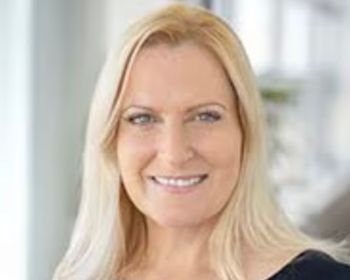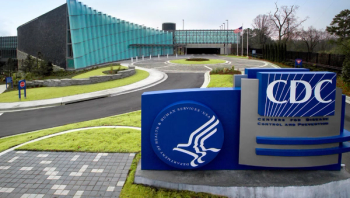
Facing challenges, Main Line Health shines
The health system recently captured the American Hospital Association’s Quest for Quality prize. Main Line has earned high marks for its focus on behavioral health and health equity.
Even though Main Line Health serves some of the most affluent communities in the Philadelphia area, the hospital system has endured no shortage of challenges in recent years.
Like many hospitals around the country, Main Line Health is encountering financial difficulties that are beyond the norm for the system. Main Line Health CEO Jack Lynch says the system has lost money in three of the last four years, although the system remains healthy enough to absorb these losses.
In addition, with the closure of two other nearby hospitals and other providers scaling back services, Main Line is serving more patients. Waiting times have risen in emergency departments and some elective surgeries have been delayed due to hospitals being filled to capacity, officials say.
Despite these challenges, Main Line Health continues to earn high marks in patient care. All four of Main Line’s acute care hospitals earned “A” grades from the
In July,
In an interview with Chief Healthcare Executive®, Lynch says he’s grateful for the recognition, but he also makes it clear the system won’t rest on its accolades.
“I tell our team all the time, you can have all the trophies in the world, you can have all the awards in the world,” Lynch says. “But you literally start over every single time a patient walks through the door.”
(See part of our conversation with Main Line Health leaders in this video. The story continues below.)
Investing in behavioral health
Many hospitals are seeing
In 2022, the system opened a new behavioral health unit at Bryn Mawr Hospital. The Inpatient Psychiatric Unit includes 40 private rooms.
Barbara Wadsworth, Main Line Health’s executive vice president and chief operating officer, tells Chief Healthcare Executive that Lynch was the driving force behind the expanded psychiatric unit.
“He was watching what was happening in our community and hospitals have been closing behavioral health centers all around us,” Wadsworth says. “And the need was great. We were holding behavioral health patients in our emergency department. Our other hospitals couldn't send patients to our behavioral health unit, because it was always full.”
A community assessment reinforced the need for an expanded behavioral health unit, and Lynch pushed for it with conviction. Other Main Line leaders understood the need, Wadsworth says, but they were worried about how they’d get the money to build it.
Lynch went to the board to make the case and Main Line eventually raised more than $8 million for the new unit, Wadsworth says.
“There's nobody else in this area that's building a behavioral health unit,” Wadsworth says. “It's not happening because you don't make money in behavioral health. But it's not about making money, it's about caring for the community. And hopefully you can make money somewhere else to make up the deficit.”
Wadsworth says the new unit offers bright spaces for patients. “It's state of the art,” she says. “It’s beautiful.”
In giving Main Line the Quest for Quality prize, the American Hospital Association praised the system’s behavioral health unit, saying it represents “a strong commitment to meeting community needs and could serve as a national model for the field.”
Focus on health equity
Hospitals and health systems across the country are getting pressed to close disparities in outcomes in patients from minority groups and other disadvantaged communities. Hospital leaders acknowledge that the COVID-19 pandemic illustrated gaps in care that need to be addressed.
Main Line has been aiming to improve health equity long before the emergence of COVID-19, officials say. For well over a decade, Main Line has maintained a quality dashboard offering insights on infections, readmissions and other metrics.
More recently, Main Line has developed new information breaking down outcomes based on race, ethnicity, gender, age, behavioral health status, and type of insurance.
“What I contend is that most health systems don't have line of sight to that level of detail,” Lynch says.
Wadsworth says visitors to the hospital recognize the system’s commitment to equity and diversity
“They always say your staff speaks the language like culture of safety, diversity, respect, equity, inclusion,” Wadsworth says. “They speak it, and it's because we've been working on this, and we've been improving on our environment and the tools that we have, the language that we use, the way that we communicate, whether we're doing something well, or there's an opportunity to do it better.
“And when we make a mistake, particularly in diversity, we talk about it,” she says.
Several years ago, Main Line began asking questions on patient surveys to see if LGBTQ+ patients were satisfied with their care. Wadsworth says the surveys initially elicited angry responses from a handful of recipients who didn’t want to see those questions.
Wadsworth says it’s important to be surveying LGBTQ+ patients, who sometimes shy away from going to doctors or hospitals because
“We need to understand how we're doing with that patient population,” she says. “And if we don't ask the question, How are we ever going to know?”
Main Line is focused on reducing
“That is a really hard goal,” Wadsworth says. “Because people don't have the same access. They don't show up with the same level of prenatal care.”
Main Line’s dashboards have also shown the need to improve medication education for patients over the age of 65. Many of those patients don’t understand their medication regimes, so Main Line is working on ways to do better with those older patients.
“If they don't understand their medications, and they go home, they're at high risk for readmission,” Wadsworth says.
Both Lynch and Wadsworth note that they see opportunities to do better. But they say they’re getting better insights on patients from disadvantaged groups who are at risk for complications and they are determined to improve.
“At Main Line, we take our responsibility of doing our very best at constantly improving access to care for people who are historically disenfranchised, or don't have access,” Lynch says.
‘The math doesn't work’
The pandemic and the closure of other hospitals and services have strained Main Line’s finances.
Main Line remains in a better position than many providers due to its strong cash reserves. As Lynch says, the system has a good balance sheet and can afford to “burn cash for a couple of years.”
But he says it’s not indefinite.
“I can weather some storms,” Lynch says. “There are places that are living paycheck to paycheck because of their payer mix. I think the American healthcare system basically has a fundamental reimbursement problem.”
Hospitals need to do more than ask for help from Washington, Lynch says. He says health system leaders must be part of the solution by finding ways to eliminate wasteful spending.
However, like many hospital executives, he says
“We get about 75 cents on the dollar for 55% of our business,” Lynch says. “The math doesn't work. If you look at the labor costs, supply cost, drug cost, utility cost, insurance, cost, food cost, all things that we're experiencing in our own homes, I have no customer that I can pass on that cost increase to.”
Lynch decried the host of added costs hospitals have encountered in recent years, including spending millions of dollars on personal protective equipment, additional security measures in the wake of
“They’re all unfunded mandates,” he says.
(Coming tomorrow: Main Line Health CEO Jack Lynch talks about health equity and patient safety.)
















































